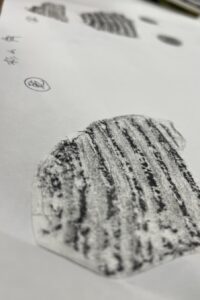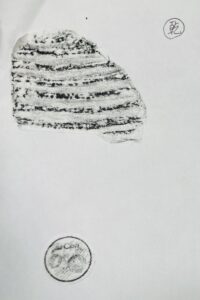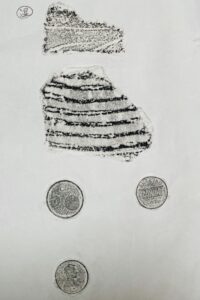12月3日1限の「博物館実習Ⅱ」の授業では、田中眞奈子准教授のご指導の下、「拓本」という技術を実際に体験させていただきました。拓本とは、木や石、石碑や土器に刻まれた文字や文様を墨などを用いて紙に写し取ったものをいいます。その種類は、乾拓法と湿拓法があり、それら二つの方法を使用して、実際に土器片やコインに刻まれた文様を写し取る実習を行いました。
実際にやってみると、なかなか技術がいるもので、完璧に模様を写し取ることができたのは、クラスでも数人しかいなかった印象です。しかしながら、写真などの記録と違い、その大きさや小さな凹凸までも写し取ることができるという利点から、現在、拓本は美術品として扱われている他、日本では、考古学などの分野で遺物の記録化の手法としても使用されているそうです。
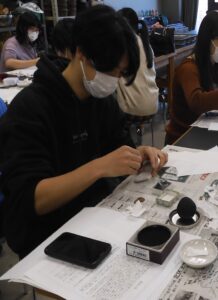
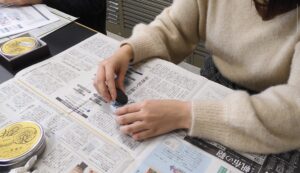
昭和女子大学では、学芸員課程と呼ばれるカリキュラムが用意されており、生徒は上記のような講義、実習などを経て、学芸員資格を取得することが可能です。また、このカリキュラムを通じて得た知識や技能は、社会の文化財を公開・活用する仕事に役立つだけでなく、保存し後世に伝えていくためにも必要不可欠です。今後、昭和女子大学の生徒だけでなく、テンプル大学の生徒も参加できるようなシステムが構築されることを願っています。
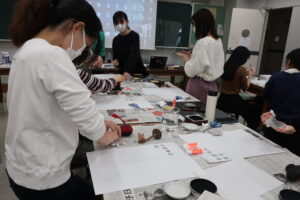
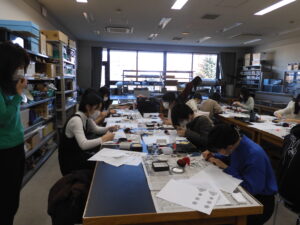
In the class of “Museum Practice Ⅱ”, on December 3, I had the opportunity to experience the technique of “Takuhon (rubbings)” under the guidance of Associate Professor Manako Tanaka. Ink rubbings are copies on paper of characters and patterns carved on wood, stone, monuments, and earthenware by using inks. There are two types of rubbings: dry rubbings and wet rubbings. Using these two methods, we practiced copying the inscriptions on fragments of earthenware and coins.
The actual process was quite skillful, and only a few students in the class were able to copy the patterns perfectly. However, since it has the advantage of being able to capture the size and even the smallest irregular texture, unlike photographic records, this technique is not only treated as a work of art, but is also used in Japan as a method of recording artifacts in fields such as archaeology today.
Showa Women’s University offers a curriculum called the curatorial course, which enables students to acquire curatorial qualifications through lectures and practical training as described above. The knowledge and skills acquired through this curriculum are not only useful for the work of publicizing and utilizing the cultural assets of society, but also essential for preserving and passing them on to future generations. I hope that in the future, a system will be established so that not only students from Showa Women’s University but also students from Temple University, Japan Campus can participate in this program.
(文責:杉山舜/TUJ)
